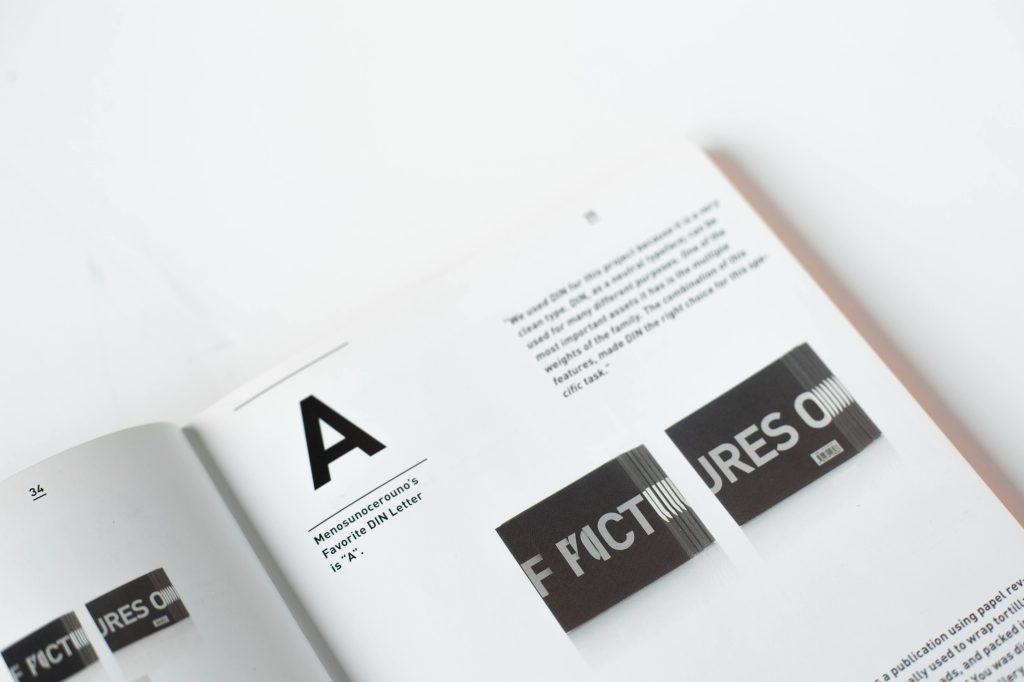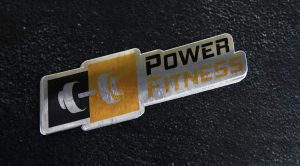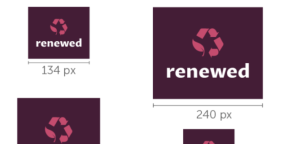Are you looking for the latest trends in logo design and typography? Look no further! In 2023, bold and sturdy fonts are taking over the logo design world. With their unique features and great readability, modern fonts are the perfect choice for building a brand that’s edgy, clean, and striking. In this article, we’ll introduce you to the top 25 fonts for striking design and the 35 new and trending modern fonts for logos and branding in 2023.
As designers aim for approachability and solidity in the present, they also look back with wonder to the past. In 2022, three different font design styles will trend. We’ll explore the most popular fonts of 2022, and explain how to select the perfect logo fonts by first determining your brand personality. Whether you’re crafting the perfect logo for your business or looking to update your branding, we’ve got you covered with over 80 best fonts for logo design.
With so many options available, it can be overwhelming to choose the right font for your logo. But don’t worry, we’re here to make the process a bit easier for you. By the end of this article, you’ll have a better understanding of the latest trends in logo design and typography, and be equipped with the knowledge to select the perfect font for your brand. Let’s dive in!
Understanding Fonts and Typography
When it comes to logo design, fonts play a crucial role in conveying the right message and emotions to your audience. Typography is the art and technique of arranging type to make written language legible, readable, and appealing when displayed. In this section, we will cover the basics of fonts and typography to help you make informed decisions when designing your logo.
Serif vs. Sans Serif Fonts
Fonts can be broadly classified into two categories: serif and sans serif. Serif fonts have small lines or flourishes at the ends of the strokes that make up letters, while sans serif fonts do not have these lines. Serif fonts are generally considered more traditional and formal, while sans serif fonts are seen as modern and informal.
Font Pairing
Font pairing is the art of combining different fonts to create a harmonious and visually appealing design. When choosing fonts for your logo, it’s important to select fonts that complement each other and enhance the overall design. For example, pairing a bold serif font with a clean sans serif font can create a striking contrast that draws attention to your logo.
Readability and Legibility
Readability refers to how easy it is to read a block of text, while legibility refers to how easy it is to distinguish individual letters and characters. When choosing a font for your logo, it’s important to consider both readability and legibility to ensure that your logo is easy to read and understand at a glance.
Kerning
Kerning is the process of adjusting the spacing between individual letters to improve the overall visual appeal and readability of a block of text. Proper kerning can make a big difference in the legibility and readability of your logo, so it’s important to pay attention to this aspect of font design.
Font Trends
Font trends are constantly evolving, and it’s important to stay up-to-date with the latest trends to ensure that your logo design is fresh and modern. In 2023, we’re anticipating a departure from purely functional fonts to more lively, bold font design styles. Modern serif fonts are also expected to be a popular choice for logo design. When choosing a font for your logo, consider the type of font, whether it’s bold or italic, and whether it’s in uppercase or lowercase, to ensure that it aligns with current font trends.
Exploring Logo Design
Logo design is a crucial aspect of any business or brand. It is the face of your company and the first thing people notice about your brand. A well-designed logo can leave a lasting impression on your customers and help you stand out from the competition.
When designing a logo, it’s important to consider the overall brand identity and the message you want to convey. A good logo should be simple, memorable, and timeless. It should also be versatile enough to be used across different mediums, such as social media, web design, and signage.
One of the key elements of logo design is the choice of font. The right font can help convey the tone and personality of your brand. In 2023, thick and bold strokes are a popular trend in logo fonts. Fonts like Bourton, Brocklyn, and Glatic are great choices for creating a striking and memorable logo.
When it comes to logo design, inspiration can come from anywhere. It’s important to stay up-to-date with the latest design trends and techniques, but also to be innovative and unique in your approach. Don’t be afraid to try something new and push the boundaries of traditional logo design.
Overall, logo design is a crucial aspect of any business or brand. It’s important to take the time to create a well-designed logo that accurately represents your brand identity and leaves a lasting impression on your customers. With the right font and a creative approach, you can create a logo that stands out and helps your brand succeed.
Impact of Font Choices on Branding
The font you choose for your logo and branding can have a significant impact on how your brand is perceived by your target audience. Fonts can communicate your brand personality, increase brand recognition, and differentiate your brand from your competitors.
When choosing a font for your brand, it’s essential to consider the message you want to convey and the emotions you want to evoke. For example, if you want to establish your brand as authoritative and trustworthy, you may want to choose a font that is bold, clean, and easy to read, such as Arial or Helvetica. On the other hand, if you want to create a more playful and approachable brand, you may want to choose a more whimsical font, such as Comic Sans or Brush Script.
The font you choose can also impact how established your brand appears. For example, a serif font, such as Times New Roman, can give your brand a more traditional and established feel, while a sans-serif font, such as Arial or Helvetica, can give your brand a more modern and contemporary feel.
It’s important to note that the font you choose should also be consistent with your brand identity and business goals. If your brand is focused on sustainability and eco-friendliness, you may want to choose a font that is more natural and organic, such as Garamond or Verdana.
In summary, font choices can have a significant impact on your branding and how your brand is perceived by your target audience. When choosing a font, it’s essential to consider the message you want to convey, the emotions you want to evoke, and how consistent it is with your brand identity and business goals.
Popular Fonts in Logo Design
Choosing the right font for your logo is crucial as it can make or break the design. A font can convey a brand’s message and personality, so it’s important to choose one that aligns with your brand’s values and image.
When it comes to logo design, there are two main types of fonts: serif and sans-serif. Serif fonts have small lines or flourishes at the ends of their letters, while sans-serif fonts do not. Both types of fonts can be effective in logo design, depending on the brand’s style and message.
Some of the most popular serif fonts used in logo design include Bodoni, Garamond, and Didot. These fonts are elegant and sophisticated, making them a great choice for luxury brands or those that want to convey a sense of tradition and history.
On the other hand, sans-serif fonts like Helvetica, Avenir, and Futura are popular choices for modern and minimalist brands. These fonts are clean and simple, giving a sleek and contemporary look to the logo.
Another popular font in logo design is Times New Roman, a serif font that is often used in more traditional and academic settings. Georgia is another serif font that is commonly used in logo design, particularly for brands in the tech industry.
In addition to these popular fonts, there are also many script fonts that can add a personal touch to a logo design. Pacifico, Lobster, and Alex Brush are just a few examples of script fonts that can convey warmth, creativity, and elegance.
When choosing a font for your logo, it’s important to consider the overall message and personality of your brand. A font that works well for one brand may not be the best choice for another, so take the time to explore different options and find the one that best represents your brand.
Trending Font Styles in 2023
As we move towards 2023, the world of typography is constantly evolving, with new font styles emerging every year. If you want to stay ahead of the curve when it comes to logo design, it is essential to keep up with the latest font trends. Here are some of the trending font styles that you should be aware of in 2023.
Modern Fonts
Modern fonts are always in style, and 2023 is no exception. Sans-serif fonts with geometric, futuristic, abstract, or urban styles are particularly popular. Some of the most beloved modern fonts include Bodoni, Helvetica, Avenir, and Futura, all of which have been in use for decades and are pre-installed on most computers today.
Vintage Fonts
Vintage fonts offer a classic and timeless look that is perfect for logo design. They are particularly popular for brands that want to evoke a sense of nostalgia or connect with a specific era. Some popular vintage fonts that are making a comeback in 2023 include serif fonts like Garamond and Baskerville, as well as script fonts like Lobster and Pacifico.
Classic Fonts
Classic fonts are always a safe bet when it comes to logo design. They offer a timeless look that is both elegant and sophisticated. Serif fonts like Times New Roman and Georgia are classic choices that never go out of style, while script fonts like Snell Roundhand and Zapfino offer a more ornate and decorative look.
Futuristic Fonts
Futuristic fonts are all about pushing the boundaries of typography and exploring new design possibilities. They are particularly popular in industries like technology and science fiction, where a futuristic look is essential. Some popular futuristic fonts in 2023 include sans-serif fonts like Proxima Nova and DIN, as well as display fonts like Bebas Neue and Roboto.
Retro Fonts
Retro fonts are all about evoking a sense of nostalgia for a bygone era. They are particularly popular in industries like fashion and music, where vintage styles are often celebrated. Some popular retro fonts in 2023 include serif fonts like Clarendon and Rockwell, as well as script fonts like Brush Script and Edwardian Script.
Calligraphy Fonts
Calligraphy fonts offer a hand-drawn look that is perfect for logo design. They are particularly popular for brands that want to convey a sense of elegance and sophistication. Some popular calligraphy fonts in 2023 include script fonts like Great Vibes and Allura, as well as brush fonts like Brusher and Harman.
In conclusion, staying on top of the latest font trends is essential if you want to create striking and memorable logos. By incorporating some of these trending font styles into your designs, you can ensure that your logos are both modern and timeless.
The Role of Display and Script Fonts
When it comes to logo design and branding, choosing the right fonts is crucial. Display fonts and script fonts are two popular choices that can add personality and style to your design.
Display Fonts
Display fonts are bold, attention-grabbing, and perfect for headlines and titles. They are designed to be used at larger sizes and can make a big impact. Display fonts come in a variety of styles, from elegant and sophisticated to playful and fun. When choosing a display font, it’s important to consider legibility and readability. Some display fonts may be too ornate or difficult to read at smaller sizes, so it’s best to use them sparingly and in the right context.
Script Fonts
Script fonts are elegant and flowing, mimicking handwriting or calligraphy. They add a personal touch to your design and can convey a sense of sophistication and refinement. Script fonts are perfect for logos and branding that want to evoke a sense of luxury or high-end quality. However, it’s important to use script fonts carefully and sparingly, as they can be difficult to read at smaller sizes and may not be appropriate for all types of branding.
When using display and script fonts in your logo design and branding, it’s important to consider the overall tone and message you want to convey. Display fonts can add a bold and impactful element, while script fonts can add a sense of elegance and refinement. However, it’s important to use these fonts carefully and in the right context to ensure that they enhance your design and effectively communicate your brand’s message.
Influence of Industries on Font Selection
When it comes to selecting fonts for branding, different industries have their own preferences. The font you choose can influence the perception of your brand and attract or repel customers. Here are some examples of how different industries influence font selection:
Law
Law firms often prefer traditional and conservative fonts such as Times New Roman or Garamond. These fonts convey a sense of professionalism and trustworthiness.
Mobile Apps
Mobile apps tend to use bold and modern fonts that are easy to read on small screens. Sans-serif fonts such as Helvetica or Roboto are popular choices for app design.
Hospitality
The hospitality industry often uses elegant and sophisticated fonts such as Baskerville or Bodoni. These fonts convey a sense of luxury and refinement.
Apparel
Apparel brands often use bold and unique fonts that stand out on clothing and accessories. Custom fonts are becoming increasingly popular in the apparel industry.
Interior Design
Interior design firms often use clean and modern fonts such as Futura or Avenir. These fonts convey a sense of simplicity and sophistication.
Consulting
Consulting firms often use professional and clean fonts such as Arial or Calibri. These fonts convey a sense of expertise and reliability.
Overall, the font you choose for your brand should reflect your industry and target audience. By understanding the preferences of your industry, you can choose a font that will help your brand stand out and attract customers.
Fonts in Web and Packaging Design
When it comes to web and packaging design, the fonts you choose can make a significant impact on the overall look and feel of your design. Here are a few things to keep in mind when selecting fonts for these types of designs:
Web Design
In web design, legibility and readability are key. You want to choose fonts that are easy to read on screens of all sizes and resolutions. Sans-serif fonts are generally a safe bet, as they tend to be more legible on screens than serif fonts. However, there are plenty of serif fonts that work well on the web, too.
When choosing fonts for web design, it’s also important to consider the overall style and tone of the website. For example, a modern, minimalist website might benefit from a clean, simple sans-serif font, while a more traditional or vintage-inspired website might require a serif font with more personality.
Packaging Design
In packaging design, the goal is to create a design that stands out on the shelf and catches the consumer’s eye. This means choosing fonts that are bold, attention-grabbing, and easy to read from a distance.
One trend in packaging design is the use of hand-lettered or calligraphy-style fonts. These fonts can add a personal, artisanal touch to your packaging design and help your product stand out on the shelf.
Another trend in packaging design is the use of bold, sans-serif fonts. These fonts can create a clean, modern look that appeals to consumers who value simplicity and minimalism.
When choosing fonts for packaging design, it’s important to consider the overall style and tone of the product and brand. A luxury product might require a more elegant, sophisticated font, while a fun, playful product might benefit from a more whimsical or quirky font.
Overall, choosing the right fonts for web and packaging design requires careful consideration of the audience, brand, and overall design goals. By selecting fonts that are legible, attention-grabbing, and on-brand, you can create designs that effectively communicate your message and capture the attention of your target audience.
Exploring Font Characteristics
When it comes to selecting a font for your logo design, it’s crucial to understand the different characteristics that fonts possess. Each font has its unique traits, and selecting the right one can make all the difference in conveying the right message to your audience. Here are some of the essential font characteristics to consider when designing your logo:
Form
The form of a font refers to its shape and structure. Fonts can be classified into different categories based on their form, such as serif, sans-serif, script, and display. Serif fonts have small lines or flourishes at the end of their strokes, while sans-serif fonts lack these lines. Script fonts mimic handwriting, and display fonts are meant to be used for headlines and attention-grabbing text.
Geometric
Geometric fonts are characterized by their clean, angular lines and shapes. They’re often used in modern and minimalist designs, as they convey a sense of simplicity and order.
Elegance
Elegant fonts are typically thin and delicate, with long, flowing strokes. They’re often used in high-end branding and luxury products to convey sophistication and refinement.
Fashion
Fashion fonts are bold and eye-catching, with unique and trendy design elements. They’re often used in fashion and beauty branding to convey a sense of style and trendiness.
Beauty
Beauty fonts are soft and feminine, with rounded shapes and delicate curves. They’re often used in cosmetics and beauty branding to convey a sense of elegance and femininity.
Powerful
Powerful fonts are bold and commanding, with strong, thick lines and sharp angles. They’re often used in sports and fitness branding to convey strength and power.
Slab Serif
Slab serif fonts have thick, blocky serifs and are often used in vintage and retro designs. They convey a sense of solidity and reliability.
Mid-Century Modern
Mid-century modern fonts are inspired by the design aesthetic of the 1950s and 60s. They’re characterized by clean lines, geometric shapes, and bold, contrasting colors.
Abstract
Abstract fonts are unique and unconventional, with unusual shapes and design elements. They’re often used in artistic and creative branding to convey a sense of originality and creativity.
Attitude
Attitude fonts are bold and edgy, with sharp angles and jagged lines. They’re often used in music and entertainment branding to convey a sense of rebellion and nonconformity.
Ligatures
Ligatures are unique combinations of two or more letters that are designed to flow together seamlessly. They’re often used in script and calligraphy fonts to add a sense of elegance and sophistication.
Flourishes
Flourishes are decorative elements that are added to fonts to enhance their visual appeal. They’re often used in script and display fonts to add a sense of elegance and sophistication.
In conclusion, understanding font characteristics is crucial when selecting the right font for your logo design. Each font has its unique traits, and selecting the right one can make all the difference in conveying the right message to your audience.
Long-Form Text and Readability
When it comes to designing for long-form text, readability and legibility are key factors to consider. Whether it’s for books, magazines, or any other print format, the font choice can make or break the reading experience.
Serif fonts have been traditionally used for long-form text due to their readability and legibility. These fonts have small strokes at the ends of characters, which help guide the reader’s eye along the text. Some popular serif fonts for long-form text include Times New Roman, Georgia, and Garamond.
On the other hand, sans-serif fonts have become more popular for digital formats due to their clean and modern look. However, they can still be used for print design as long as they are chosen carefully. Sans-serif fonts without too much variation in stroke width and with open letterforms can be a good choice for long-form text.
In addition to font choice, other factors such as font size, line spacing, and margin size can also affect readability. A font size that is too small or line spacing that is too tight can strain the reader’s eyes, while margins that are too narrow can make the text feel cramped.
When designing for long-form text, it’s important to prioritize readability and legibility over aesthetics. While a trendy font may look great, if it’s difficult to read, it will ultimately detract from the overall reading experience.
In summary, when designing for long-form text, consider using serif fonts with good legibility and readability. Pay attention to font size, line spacing, and margin size to ensure a comfortable reading experience. And remember, readability should always be the top priority.
Marietta Arnold is a branding and design enthusiast who draws inspiration from hobbies like hiking, photography, and art exploration. With a background in graphic design, she shares insights on branding strategies and logo design trends. Stay updated with Marietta’s work for the latest in branding and design.



